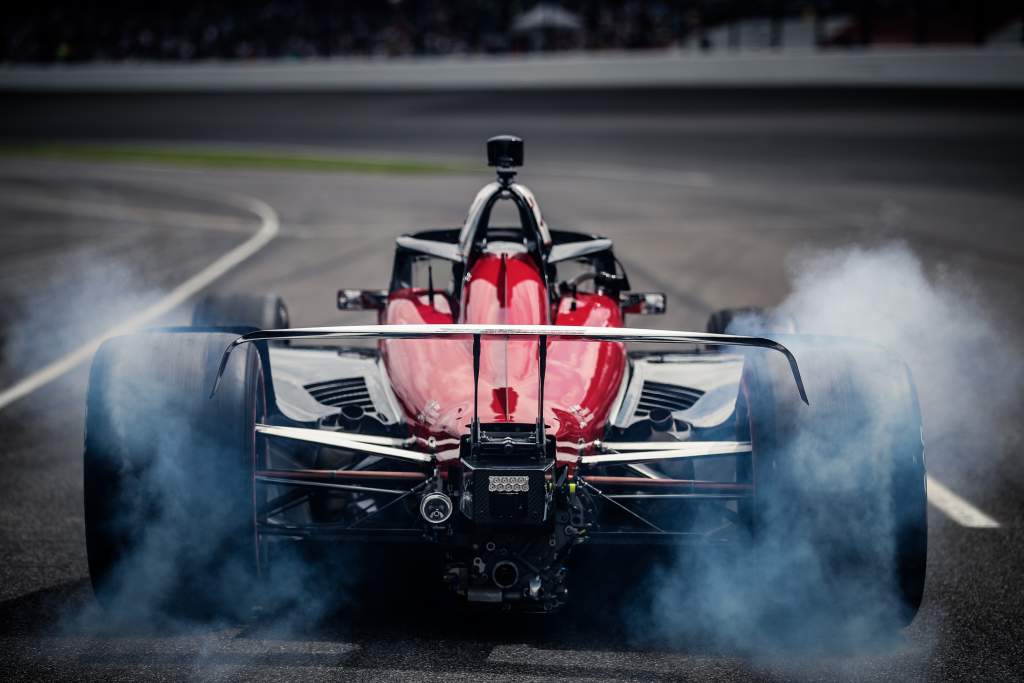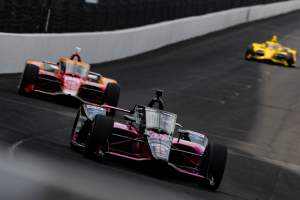Last year Honda dominated qualifying for the Indianapolis 500, and while its advantage in the race was smaller, it still won and filled eight of the top 10 positions.
When one manufacturer brings the heat like that, it’s hard if you’re the sole competition – the position Chevrolet’s in – to catch up.
However, the way last year’s 500 and this year’s event up to and including qualifying has played out shows that now more than ever the engine can’t be considered as an isolated part of the car, despite it being the bit that 500 fans have got most excited about throughout its history.
Josef Newgarden was Chevrolet’s top qualifier for Penske in 2020 in 13th, but finished fifth in the race and may have even won had he kept pace with eventual victor Takuma Sato who Newgarden exited the final stops ahead of. The package was much stronger in race trim for multiple Chevy teams.
This year, Chevrolet managed to get one more car into Fast Nine qualifying than last, with Rinus VeeKay fourth last year and his team-mate and team owner Ed Carpenter joining him this time. Carpenter was fourth in 2021 with VeeKay now third.
That proves that the Chevrolet package – guiding VeeKay to become the youngest ever driver on the front row in Indy 500 history, and to drive through the field with Newgarden and Patricio O’Ward last year – is capable of fighting at the front under the right circumstances.
Adding one more Chevrolet car to the Fast Nine for 2021 may not feel massive, but with so many years on this engine package now, both Chevrolet and Honda are looking at marginal gains, so Chevrolet has made a step forward at least equal to Honda since the 2020 event, if not bigger.
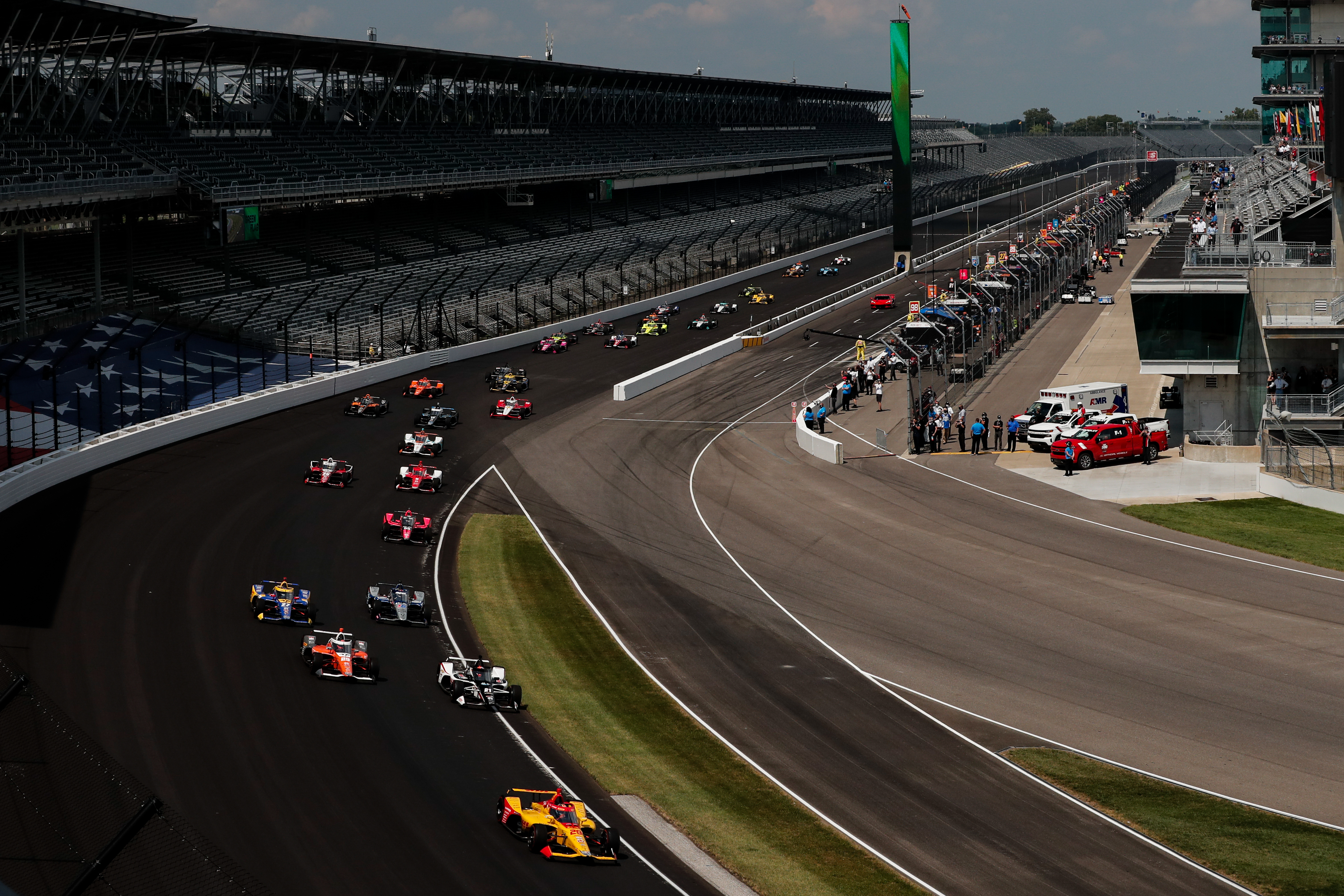
That’s significant because the 500 usually takes place in May, while last year’s August event due to the pandemic means the two marques have had three months’ fewer preparation heading into the event. And certain homologation deadlines need to be set ahead of time too, making the shorter period even more difficult.
What’s become increasingly apparent in recent years is that no manufacturer is going to make 2 or 3mph gains. It means each is chasing the smallest possible areas of the package to improve. And package is the key word, because neither Chevrolet nor Honda is working purely on the engine anymore.
“What we left here thinking in August [2020] is: let’s assume that all of us are guilty of not reaching our full potential,” Rob Buckner, Chevrolet Racing Engineering programme manager for IndyCar, tells The Race.
“So, we went to the engine programme and assumed it was an engine issue and we worked on the modelling simulation and the aero side, all of those to get better, and collectively put all those ideas together and hoped that we came up with a much better package this year.
“We left here in August thinking that it was probably a collective car performance issue so we needed to look in 20 different areas to try to get better in each one in hope that we found a 10th of a mile per hour in 20 different ideas, those all add up to give us what we were looking for.”
On the Honda side, obviously it can’t stand still based off last August’s success, and it clearly hasn’t with its 2021 qualifying performance. You can never rest on your laurels in the Indy 500 and strategy can play a huge part, fuel saving too.
David Salters has taken over from Ted Klaus this year, and is president and technical director of Honda Performance Development.
“One key thing is a racing car’s performance is a sum-of-parts,” he tells The Race.
“It’s the whole car that crosses the line.
“We have in-house groups at HPD that work on aerodynamics, cooling, and developing advanced windtunnel testing and CFD simulation methodologies.
“We also have a great vehicle performance/dynamics group that is applying state-of-the-art dynamic lap time simulation tools and has recently introduced our own ‘code’ into our in-house developed driver-in-loop simulator.
“So the point is to accumulate all these marginal gains, powertrain, fuel efficiency, aero, cooling, vehicle dynamics, through smart, diligent engineering with our race teams across the whole car.”
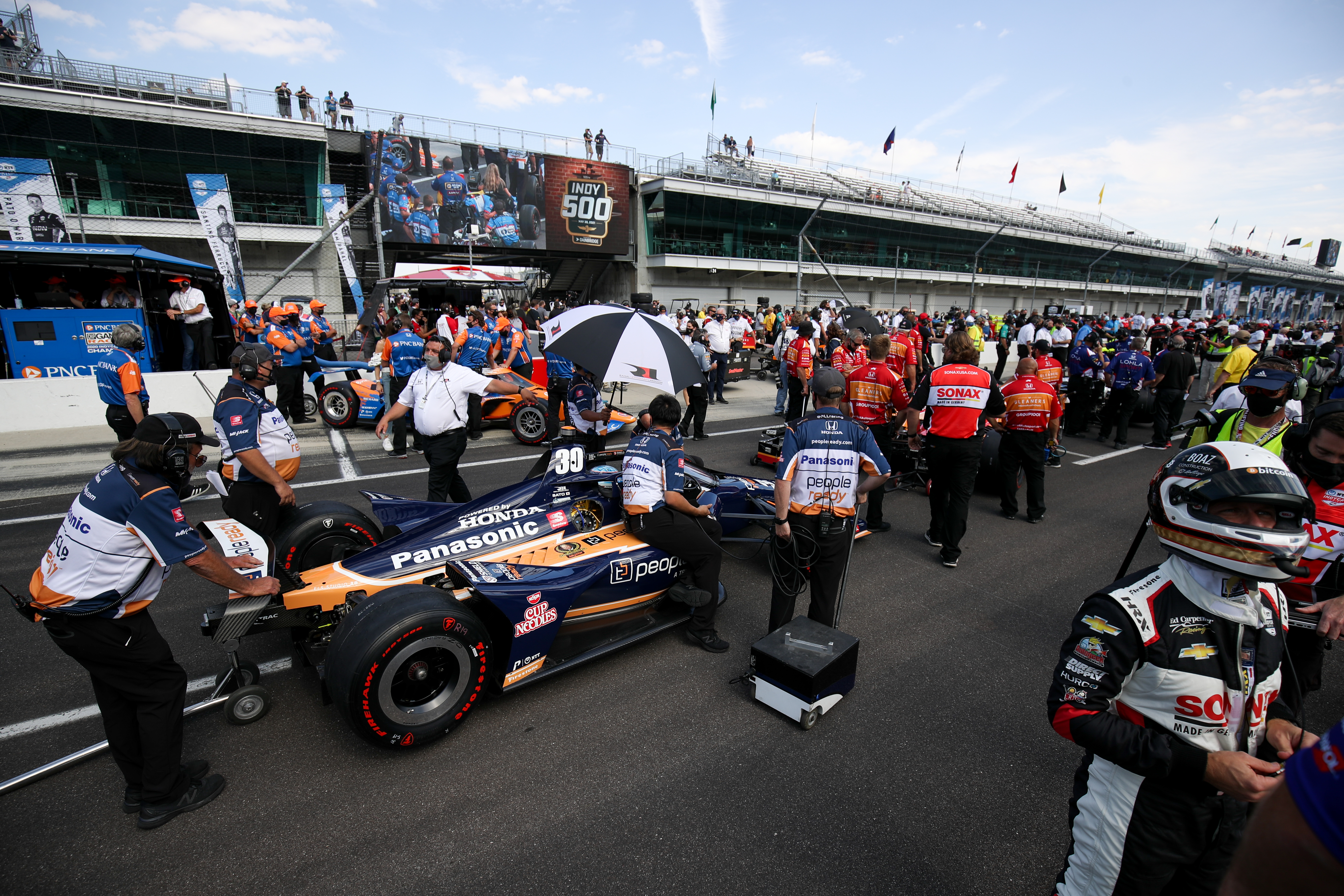
Both manufacturers have brought new exhausts this year – Honda introducing a twin-pipe layout for the first time this year at the 500, and it will have to run it for the rest of the year now – while Chevrolet introduced a less significant albeit altered design for the start of the season at Barber in March.
Qualifying tells us that Honda still holds an advantage but many of the Chevrolet runners are extremely confident in race trim, and here is another example that the engine manufacturer that does the best work outside of the engine will win, ironically.
It’s because a number of aero parts have given the cars more downforce for this year, or at least the option to run some aero parts that add downforce. For this reason passing is expected to be easier so fuel mileage by each manufacturer will play a huge role.
If the race plays out as expected and overtaking is indeed easier, we may get more of a Honda/Chevy divergence than we’ve had in recent years and a lap or two of fuel saved here or there for either marque will be crucial.
And that work isn’t isolated to the manufacturers either, the work each has done with its teams in these areas could pay dividends with many outfits running different aero configurations even between entries in multi-car teams, never mind team-by-team.
“Seriously, both manufacturers seem pretty closely matched in race trim,” says Salter. “Maybe we are good at the high-power qualifying spec, but let’s see what actually pans out…”
This battle for Indy supremacy is more difficult than ever and is sucking in more and more external items to become part of the package Chevrolet and Honda work on to find peak performance.
It’s not the only war the two marques are fighting. In 2023 a new 2.4-litre (up from 2.2) power unit will be introduced with a KERS hybrid system expected to take the cars north of 900bhp and eventually closer to 1000bhp.
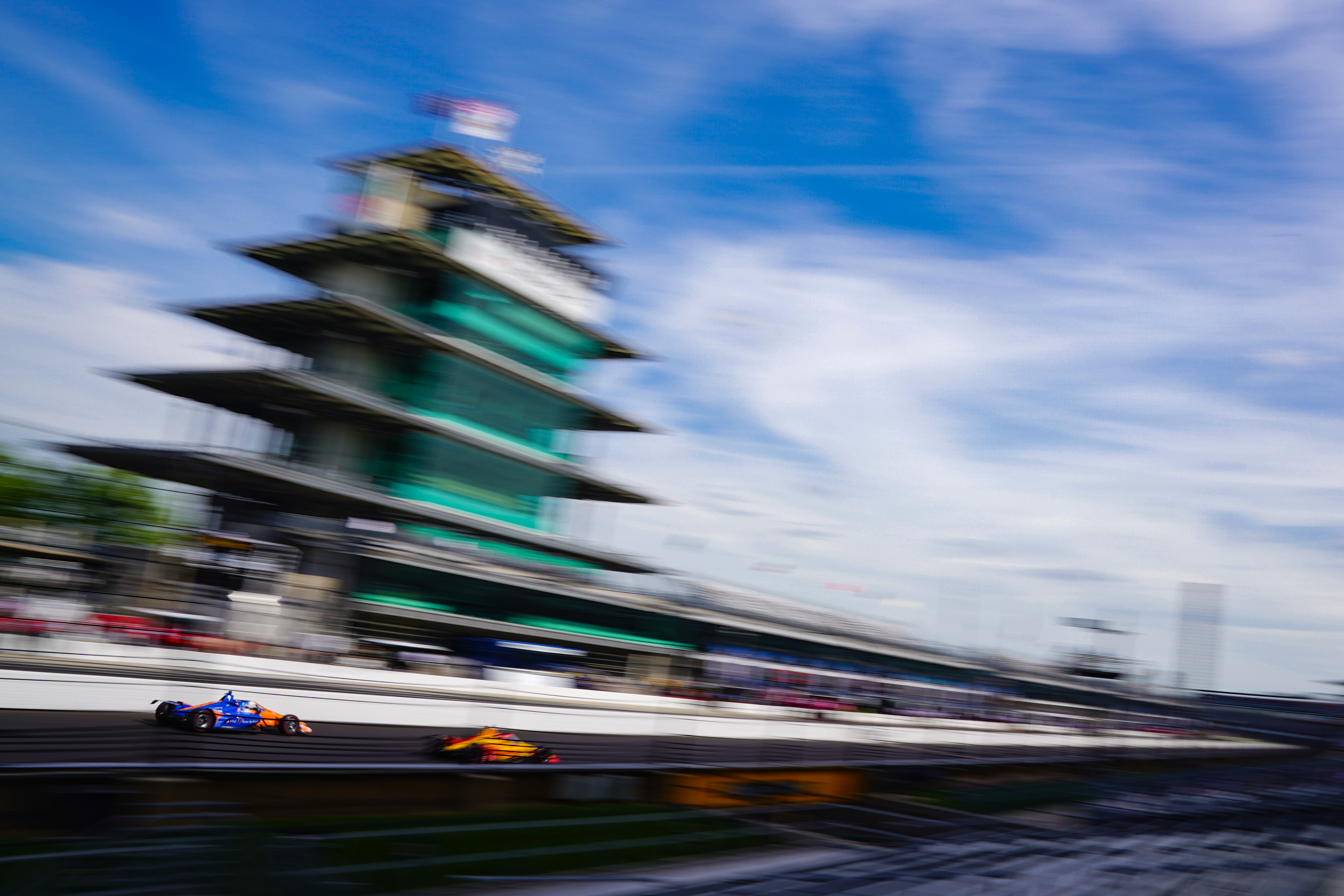
While the hybrid manufacturer hasn’t even been announced yet, both Honda and Chevrolet are simultaneously focusing on 2021 and 2023 in a bid to hit the ground running.
“The big news for us is we have a 2.4-litre running and we’re very happy with where those are in the development plans,” Buckner adds to The Race.
“Our engine programme, and technical partners at Ilmor, do a great job of ground up designs. Being an all new twin turbo V6 engine for us, we took all our learnings from the 2.2-litre, and were able to start with a clean sheet of paper for the 2.4-litre.
“The next steps for that programme will be IndyCar’s roll out of the hybrid, when all that becomes available for us, and then work towards our first on-track test which is really in IndyCar’s control at this time.
“We’re unable to go track testing until we have a hybrid unit but I think IndyCar’s doing a really good job with that project, making sure that the paddock can manage it, that it’s attainable for everyone in the field and that it’s easily maintained.
“We’re not creating some monster that punishes some teams or anything like that so they’ve been doing a really good job with that and once we get the physical hardware parts then we can put everything all together and go track testing.”
The Race understands Honda has built parts and sections of a unit to test but not a total engine – which is fine because neither manufacturer can steal a march on the other with the hybrid units not yet installed and not expected to even arrive with the teams until 2022. Mid-2022 is believed to be the on-track testing debut goal.
While Chevrolet has experience in the EV road car market, Honda has more experience of hybrid units in motorsport, although it had left F1 when it used KERS systems in 2009.
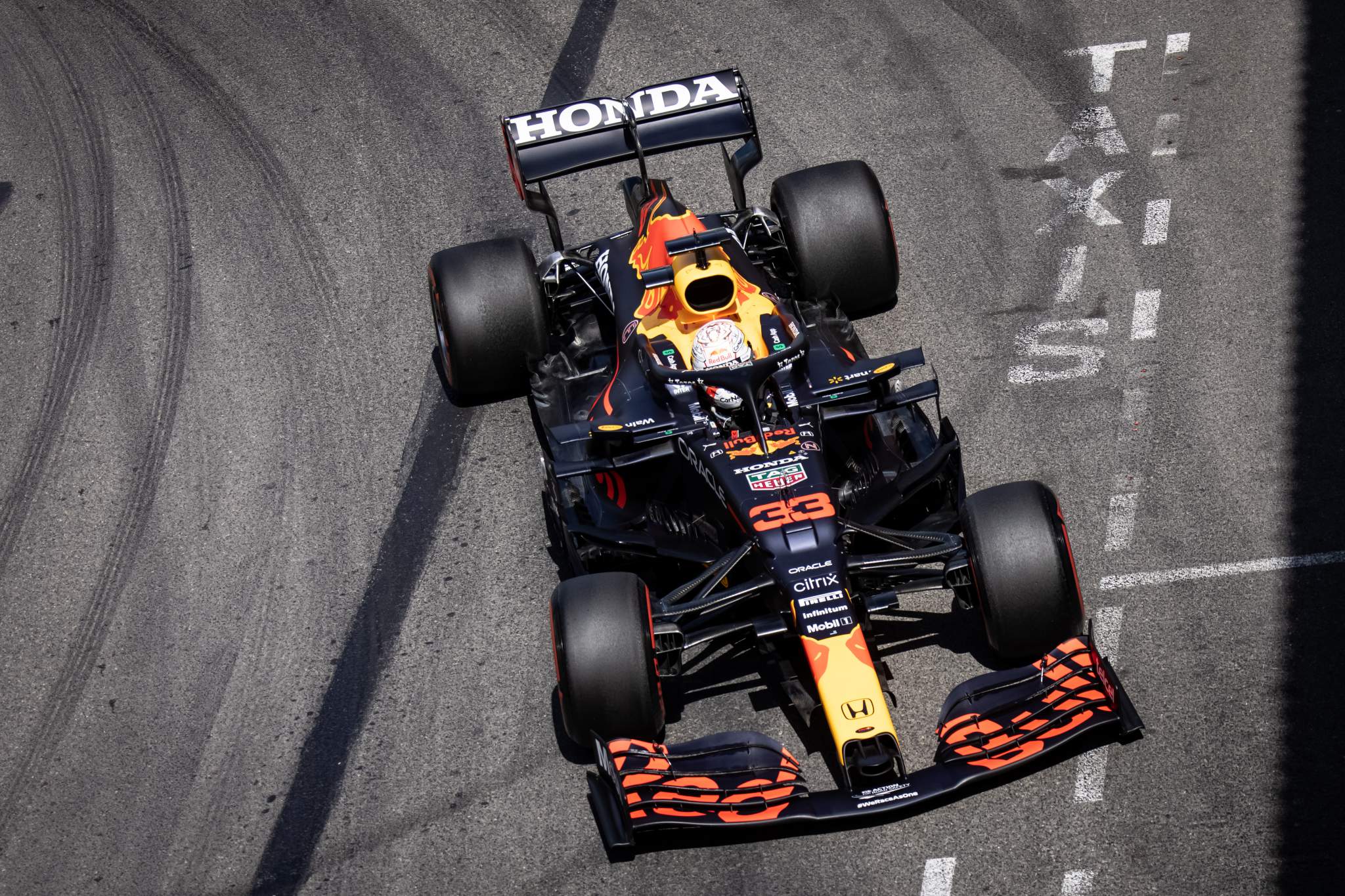
However F1 – which Honda has been back in since 2015 – has used a similar hybrid system since 2014 and The Race asked Salters if it had taken any personnel from across the pond to help with the adaptation.
“We have great collaboration with our F1 colleagues at HRD Sakura and HRD Milton Keynes and our Honda electrification colleagues in Japan,” he told The Race.
“With their input, we are developing our own engineering simulation tools to model the behaviour of the hybrid powertrain.
“We have collaborated on a feasibility study for a racing Battery Electric Vehicle [BEV] to help build our skills, engineering tools and competency.
“We actually ran a design competition within our engineering group with two teams designing a racing BEV GT car which was super cool and very mentally invigorating for all involved.
“Our engineers sort of did this outside of their already long hours, racing day-jobs, which is humbling and inspiring to see.”
One area which is expected to become extremely important at least in the initial phase of development is with the bio-fuel used by IndyCar. The efficiency of this fuel, especially given the power boost in 2023, is going to be important and could be one of many avenues opened up to either manufacturer to steal a march.
Fundamentally though, the same process applies to both 2021 and 2023. With the avenues for improvement closed off by maxing out the gains in current IndyCar, and without the hybrid unit to be able to test the 2023 unit, everything is down to simulation and dyno work.
The war to rule IndyCar engines is being fought across multiple battle lines, and it’s only just begun.


